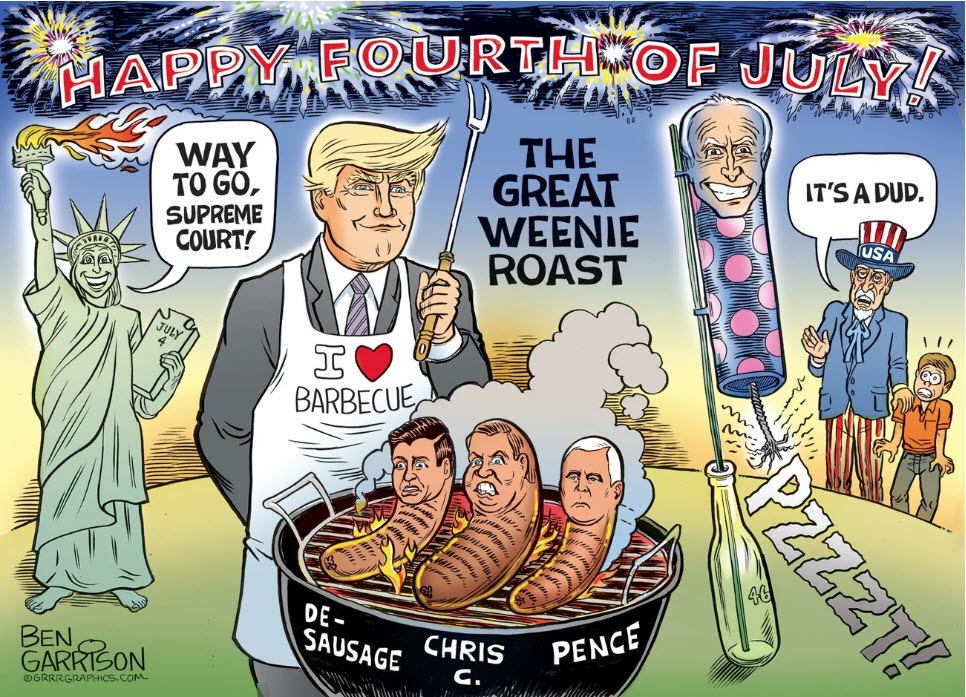Open in app or online Twitter Files: GEC, New Knowledge, and State-Sponsored Blacklists Americans have been paying taxes to disenfranchise themselves, as government agencies and subcontractors undertake a massive digital blacklisting project Matt Taibbi Mar 2  A new #Twitter Files thread will be dropping in a few hours, at noon EST. It follows up the Hamilton 68 story of a month ago with examples of state-funded digital blacklisting campaigns run amok. It’s self-explanatory, but some advance context might help: In 2015-2016, during the brief, forgotten period when Islamic terrorism was fading as a national obsession and Trumpian “domestic extremism” had not yet become one, Barack Obama made a series of decisions that may yet prove devastating to his legacy. The short version is he signed Executive Order 13271, establishing a “Global Engagement Center” (“GEC”) to “counter the messaging and diminish the influence of international terrorist organizations.” This act got almost no press and even within government, almost no one noticed. In the bigger picture, however, a lame duck president kick-started the process of shifting the national security establishment’s focus from counterterrorism to “disinformation.” Whether by malfunction or design, this abrupt course change of Washington’s contracting supertanker would have dramatic consequences. In fact, the tale of how America’s information warfare mechanism turned inward, against “threats” in our own population, might someday be remembered as the story of our time, with collective panic over “disinfo” defining this generation in much the same way the Red Scare defined the culture of the fifties. This is a complicated story and it would be a mistake to jump to simplistic conclusions, like that the Global Engagement Center (humorously nicknamed “GECK” or “YUCK” by detractors in other agencies) is an evil Orwellian mind-control scheme. It isn’t. But for a few crucial bad decisions, it could have fulfilled a useful or at least logical mission, much as the United States Information Agency (USIA) once did. However, instead of stressing research and public reports, as the USIA did when responding to Soviet accusations that Americans had caused the AIDS crisis, GEC funded a secret list of contractors and employed a more surreptitious approach to “counter-disinformation,” sending companies like Twitter voluminous reports on foreign “ecosystems” — in practice, blacklists. GEC was not conceived as a partisan mechanism to defang conservative media, despite the recent true and damning series of reports by the Washington Examiner, outlining how a GEC-funded NGO in England used algorithmic scoring to de-rank outlets like The Daily Wire and help papers like the New York Times earn more ad revenue. The blacklisting tales you’ll be reading about later today on Twitter also primarily target American conservatives, though GEC and GEC-funded contractors also target left-friendly movements like the gilets jaunes (yellow vests), socialist media outlets like Canada’s Global Research, even the Free Palestine movement. The scary angle on GEC is not so much the agency as the sprawling infrastructure of “disinformation labs” that have grown around it. Underneath America’s love affair with “anti-disinformation” in the Trump years — which expressed itself in the seemingly instant construction of a sprawling complex of disinformation studies “labs” at institutions like Harvard, Stanford, Clemson, UT, Pitt, William and Mary, the University of Washington, and other locations — lay a devastating secret. Most of these “experts” know nothing. Many have skill, if you can call mesmerizing dumb reporters a skill, but in the area of identifying true bad actors, few know more than the average person on the street. This is described repeatedly in the #TwitterFiles. In one sequence Twitter was contacted by Sheera Frenkel of the New York Times, who was writing a hagiographic profiles of “disinformation” warrior Renee DiResta, who’d achieved some renown as a campaigner against vaccine misinformation. Frenkel wrote Twitter to ask why they hadn’t hired “independent researchers” like DiResta, Jonathan Albright, and Jonathon Morgan — coincidentally, all hired witnesses of the Senate Intelligence Committee — to help Twitter “better understand” its own business. At the sight of Frenkel’s provocative note, some Twitter execs lost it. “The word ‘researcher’ has taken on a very broad meaning,” snapped Nick Pickles. “Renee is literally doing this as a hobby… Of those three only [Albright] is the most credible, but… the bulk of his work is Medium blogs.” “Like CVE before it, misinformation is becoming a cottage industry,” agreed comms official Ian Plunkett, referencing “countering violent extremism,” a.k.a. counterterrorism. Today’s thread among other things will detail crude digital blacklisting schemes dreamed up by this new cottage industry. Each features the same design “flaw,” in which giant lists of supposed foreign disinformationists somehow also come to include ordinary Americans, often with the same political leanings. In one ridiculous case, the Atlantic Council’s Digital Forensic Research Lab (DFRLab), a GEC-funded entity, sent Twitter a huge list of people they suspected of “engaging in inauthentic behavior… and Hindu nationalism more broadly.” You’ll see the list to judge. As was the case with the “Hamilton 68” story, in which a spook-laden think tank purported to track accounts linked to “Russian influence activities” while really following the likes of @TrumpDyke and @TimeForTrumppp, this DFRLab list of “Hindu nationalists” is weirdly packed with real septuagenarian Trump supporters. One, a woman named Marysel Urbanik who immigrated from Castro’s Cuba in her youth, struggled to understand why a Washington think tank had sent Twitter a letter ID’ing her as either “inauthentic” or a Hindu nationalist. “They say I’m what?” “A Hindu nationalist,” I said. “Well, suspected.” “But I’m Cuban, not Indian,” she pleaded, confused. “Hindu? I wouldn’t even know what words to say.” Such listmakers are either employing extremely expansive definitions of hate speech, extremely inexact methods of identifying spam, or they’re doing both in addition to a third thing: keeping up a busywork campaign for underemployed ex-anti-terror warriors, who don’t mind racking up lists of “foreign” disinformationists that just happen to also rope in domestic undesirables. In his book Information Wars, the original nominal head of GEC and former Time editor Rick Stengel explained an epiphany he had that allowed him to tie the fight against “foreign” disinformation to matters domestic. It happened when Stengel watched a YouTube video of Russian nationalist Alexander Dugin: He castigated Hillary Clinton’s campaign as a bunch of ‘“storm troopers.” He lambasted what he called the American “obsession with the fake Russian threat.” He said it was an excuse for losers… The production values were poor, the audience was small, but the video revealed an extraordinary mirroring of language and ideas between Dugin and other Russian voices and candidate Trump… The notion that there was some kind of shared rhetorical playbook just seemed too fanciful to believe. While the messages did not exactly repeat each other, they certainly rhymed. At the same time as Dugin was uploading his video, according to public U.S. intelligence, the GRU—the Russian military intelligence service—began going through the email accounts of DNC officials… Stengel didn’t need to prove an actual link between Dugin, Russia, and Trump. It was enough to imply it, by placing stories about the GRU near Trump’s name, while asserting Trump and Dugin’s ideas “rhymed.” This is probably what’s going on in the DFRLab list: one assumes many BJP supporters have views that “rhyme” with what one might call the American version of nationalism, #MAGA. Similarly, a GEC report sent to Twitter about “Russian Pillars of Disinformation” stressed that even actors who “generate their own momentum” online should be considered part of a propaganda “ecosystem.” Independence, the GEC report stressed, should not “confuse those trying to discern the truth.” Upgrade to paid Twitter’s complaints against agencies like GEC and projects like the India list dovetail with what current and former intelligence sources have been calling in to comment on, since the first Twitter Files reports: that though sophisticated methods for detecting true bad actors exist, virtually none of the high-profile “experts” employ those. Instead, methodologies are often openly absurd. List #1 might target everyone who follows more than one Chinese diplomat on Twitter. List #2 might rope in everyone who’s retweeted a “Peter Douche” video or a “Free Palestine” meme made in Iran. One former GEC staffer laughs about how experts win over the media with impressive-looking “hairball” charts that nearly always come down to some sort of volume or affinity analysis: who retweets whom, whose ideas “rhyme” with whose, etc. In a key email, Twitter Trust and Safety chief Yoel Roth is asked in an internal Q&A if outside researchers can really detect “Russian fingerprints” just by looking at Twitter’s public data. “In short, no,” he said, adding that it was really only possible to make “inferences.” But inferences are enough, for the innumerable “Centers for Countering Whatever” whose real goals may involve deplatforming or disenfranchising domestic groups deemed unworthy of sharing the full benefits of Western civil society (like the unmolested use of PayPal, GoFundMe, Twitter, etc.). With an inference, you can smear, and with a smear, you can do damage. The Hamilton 68 scam in this sense was perfect. It used digital alchemy to create streams of news stories tying ordinary Americans to “foreign” disinformation. With headlines like CNN’s “Russian bots are using #WalkAway to try to wound Dems in midterms” in hand, a “Disinfo Lab” or a noble journalistic enterprise like the “extremism” desk at USA Today can finish the important work of calling up strings of Internet companies to “ask” why this or that person is still allowed to use credit cards, advertise on Amazon, etc. What organizations like GEC and subcontractors like DFRLab do are just subtler versions of those same schemes. They make lists and let the increasingly sophisticated machinery of digital deprivation do the rest. It’s bad enough when this dubious activity is private. But paying taxes for the pleasure? This supertanker needs turning around. You’re on the free list for TK News by Matt Taibbi. For the full experience, become a paying subscriber. Upgrade to paid Share Like Comment Share Read Racket News in the app Listen to posts, join subscriber chats, and never miss an update from Matt Taibbi. © 2023 Matt Taibbi 548 Market Street PMB 72296, San Francisco, CA 94104 Unsubscribe |
AI is good at adding Content
In God we Trust

This is my blog My thoughts with AI content. The AI content is obvious, but usable in explain my thoughs.







Leave a Reply
You must be logged in to post a comment.